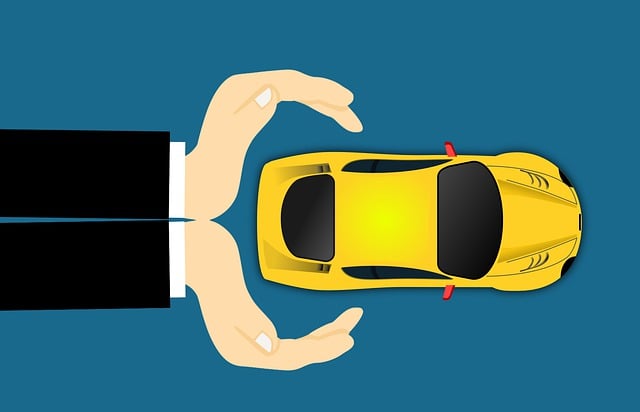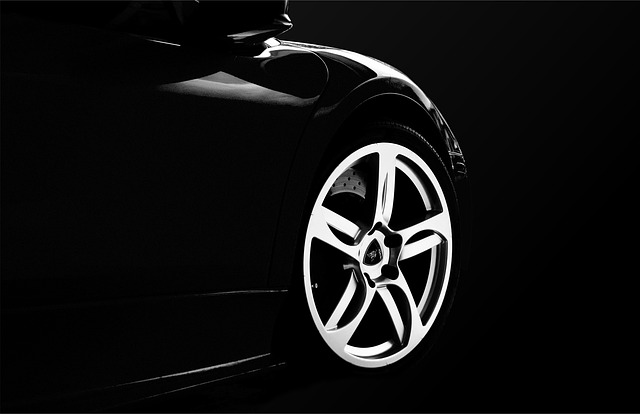Collision and comprehensive auto insurance offer distinct levels of protection for vehicle owners. Collision insurance covers damages from car accidents with other objects or vehicles, but excludes losses due to natural disasters, theft, or vandalism. Comprehensive insurance, in contrast, provides broader coverage against a range of unforeseen events including weather events, animal encounters, theft, and vandalism. The choice between them depends on individual needs and risk factors, with collision suiting accident-focused concerns and comprehensive offering added peace of mind for broader protection. Understanding these differences is key to ensuring adequate financial protection in case of an accident.
In today’s world, understanding auto insurance options is crucial for financial protection during unforeseen events like car accidents. This article delves into the intricacies of two primary coverage types: collision insurance, designed for direct vehicle damage, and comprehensive auto insurance, offering broader protection against unexpected incidents. We explore key distinctions between collision and comprehensive, scenario analysis for optimal coverage, common exclusions, benefits beyond collisions, premium comparisons, and simplified claims processes. By the end, readers will be equipped to make informed decisions between these two essential options: collision vs. comprehensive auto insurance.
Understanding Collision Insurance: Coverage for Direct Vehicle Damage

Collision insurance is a crucial component of auto coverage that shields vehicle owners from financial strain in the event of an accident. Unlike comprehensive insurance, which caters to a wider range of risks, collision insurance specifically targets direct damage to your car as a result of collisions with other vehicles, objects, or even animals. This type of protection is designed to cover repair or replacement costs, ensuring you’re not left footing a substantial bill out of pocket.
When you opt for collision coverage, you gain peace of mind knowing that your vehicle’s structural integrity and resale value are protected. It typically includes incidents like rear-end collisions, side impacts, and rollovers, encompassing both your car’s exterior and interior. However, it’s essential to remember that collision insurance does not cover damages caused by non-collisional events such as natural disasters, theft, or vandalism, which is where comprehensive auto insurance steps in.
Comprehensive Auto Insurance: Protecting Against Unforeseen Events

Collision and comprehensive auto insurance are two distinct types of coverage designed to protect vehicle owners, but they cater to different needs. While collision insurance is tailored to cover damages resulting from accidents involving another vehicle or stationary object, comprehensive insurance takes a broader approach by insuring against a wide range of unforeseen events. These can include natural disasters like floods or storms, theft, vandalism, and even damage caused by falling objects.
Comprehensive auto insurance provides peace of mind by safeguarding your investment against unexpected occurrences that may leave your vehicle damaged or totaled. Unlike collision coverage, which typically requires a specific cause of loss, comprehensive insurance offers broader protection. This makes it an attractive option for drivers who want to be prepared for any eventuality and avoid out-of-pocket expenses related to major incidents not covered by collision insurance.
The Difference Between Collision and Comprehensive: Key Distinctions

Collision insurance and comprehensive insurance are two distinct types of auto coverage, each offering unique protections for vehicle owners. When considering collision protection during a car accident, understanding this difference is crucial. Collision insurance specifically covers damages to your vehicle resulting from a crash with another object or vehicle. It does not include losses due to natural disasters, theft, or vandalism. On the other hand, comprehensive auto insurance provides broader protection, encompassing various risks beyond collisions. This includes damage from weather events, animal encounters, and even theft or vandalism.
The key distinction lies in their scope: collision focuses on physical damage to your car, while comprehensive insurance takes a more holistic approach, protecting against diverse, often unexpected, perils. Choosing between them depends on individual needs; collision may be sufficient for those primarily concerned with accident-related damages, whereas comprehensive offers added peace of mind for those wanting broader coverage.
Scenario Analysis: When to Use Collision Insurance

In the event of a car accident, knowing when to invoke collision insurance versus comprehensive auto insurance is crucial for effective financial protection. Collision insurance covers damages resulting from collisions with other vehicles or objects, such as poles or trees. It’s essential if you’re at fault for an accident, as it helps repair or replace your vehicle. Comprehensive auto insurance, on the other hand, offers broader coverage, protecting against non-collision incidents like theft, vandalism, natural disasters, and animal-related damages. This type of insurance is beneficial when your vehicle suffers damage beyond what collision coverage provides.
When deciding between collision and comprehensive, consider the likelihood and severity of potential accidents. If you drive in areas prone to fender benders or live in regions with high theft rates, collision insurance might be a smarter choice. Conversely, if you own an antique vehicle more valuable than collision limits or frequently encounter unforeseen hazards like hailstorms, comprehensive coverage offers better peace of mind.
Common Exclusions in Collision Insurance Policies

Collision insurance is designed to protect against financial loss in the event of a car accident, but it’s important to understand what’s covered and what isn’t. While collision coverage is comprehensive, there are several common exclusions to be aware of when comparing policies. These exclude specific situations from coverage, distinguishing them from collision insurance. For instance, many policies won’t cover damage caused by wear and tear, natural disasters, or intentional acts like vandalism or theft.
Comprehensive auto insurance, in contrast, offers broader protection by covering a wide range of incidents beyond collisions, including theft, vandalism, natural disasters, and even animal-related accidents. This type of policy is a good choice for drivers who want extra peace of mind, as it protects against a broader spectrum of unexpected events, ensuring that the financial burden of unforeseen circumstances is minimized.
Benefits of Comprehensive Insurance: Peace of Mind Beyond Collisions

Comprehensive insurance offers a layer of protection that goes beyond just collision-related incidents, providing peace of mind for drivers. Unlike collision coverage, which primarily focuses on accidents involving another vehicle or fixed object, comprehensive insurance includes a wider range of scenarios. This type of policy can safeguard you from natural disasters like floods or wildfires, theft, vandalism, and even damage caused by animals.
By opting for comprehensive auto insurance, drivers gain the assurance that their vehicles are protected in various unforeseen circumstances. This peace of mind is invaluable, allowing individuals to enjoy their travels without constantly worrying about potential damages. With comprehensive coverage, policyholders can focus on the journey ahead, knowing they have a safety net in place for unexpected events.
Cost Comparison: Collision vs. Comprehensive Premiums

When considering auto insurance, understanding the differences and cost implications between collision and comprehensive coverage is crucial. While both protect against financial loss in certain scenarios, their scope varies significantly. Collision insurance specifically covers damages arising from accidents, including collisions with other vehicles or fixed objects. In contrast, comprehensive insurance offers broader protection, covering not just collisions but also theft, vandalism, natural disasters, and other unforeseen events.
Collision premiums tend to be lower since they focus on a specific risk—accidents—while comprehensive premiums are generally higher due to the broader range of covered perils. However, when deciding between the two, it’s essential to assess your driving history, vehicle condition, and personal financial situation. Comprehensive insurance might be more beneficial for high-value vehicles or those with a history of claims, as it provides peace of mind against unexpected events that could lead to significant expenses.
Claims Process: Step-by-Step Guide for Both Collision and Comprehensive

When it comes to car accidents, understanding your insurance coverage is crucial. The claims process for collision and comprehensive auto insurance policies can seem daunting, but breaking it down into manageable steps can help.
Collision Insurance: This type of coverage pays for repairs or replacement of your vehicle if it’s damaged in an accident. First, gather all necessary information from the other driver involved. Then, contact your insurance provider to report the incident. They will assign a claim number, which you’ll need to provide when filing repair estimates. After receiving quotes, file your collision claim with your insurer. They will either approve or deny your claim based on policy terms and the repair costs. If approved, they’ll pay for repairs directly to the shop or reimburse you upon receipt of invoices.
Comprehensive Insurance: Offering protection against non-collision incidents like theft, vandalism, or natural disasters, comprehensive insurance covers a wider range of events. The claims process starts with contacting your insurer and providing details about the incident. They will assess the damage and determine if it’s covered under your policy. After approval, you can choose an authorized repair facility or receive reimbursement for out-of-pocket expenses like rental cars. Remember, understanding these processes is vital when navigating collision vs. comprehensive auto insurance claims.
Choosing the Right Coverage: Tips for Deciding Between Collision and Comprehensive

When deciding between collision and comprehensive auto insurance, understanding the nuances of each coverage is key. While collision insurance is designed to protect you from financial loss in case of a direct collision with another vehicle or object, comprehensive insurance goes beyond that. It covers a wider range of incidents, including theft, vandalism, natural disasters, and animal-related accidents.
Choosing the right coverage depends on your driving habits and lifestyle. If you drive cautiously and park securely, collision insurance might be sufficient as it typically covers repairs or replacements due to at-fault accidents. However, if you often encounter high-risk situations like city driving or frequent car theft in your area, comprehensive insurance offers peace of mind by protecting against a broader spectrum of unforeseen events.
